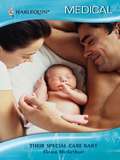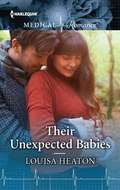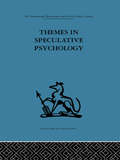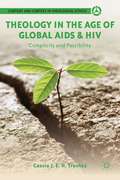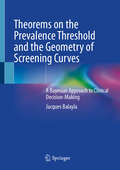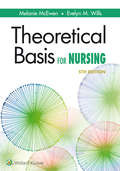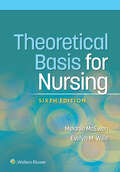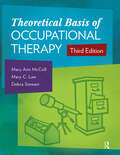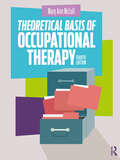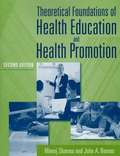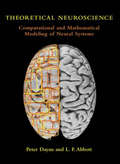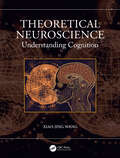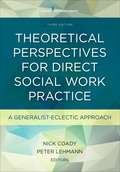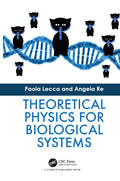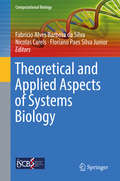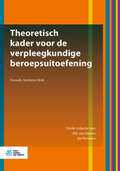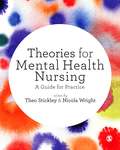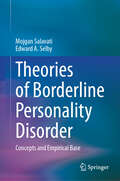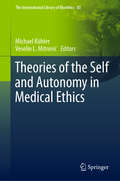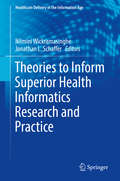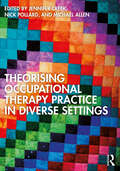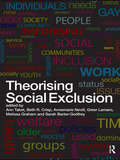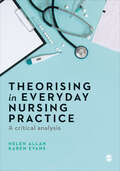- Table View
- List View
Their Six-Month Marriage Ruse
by Kristine LynnWe&’re back with the staff of Mercy Hospital in Kristine Lynn&’s latest Harlequin Medical Romance story! When two best friends have to fake being married, will they uncover real feelings? THEIR MARRIAGE IS FAKE. THEIR ATTRACTION—ANYTHING BUT! Trauma doc Millie would move mountains for her best friend, psychiatrist Dexter, who&’s been by her side through thick and thin. But now she needs the ultimate favor. To secure her dream job as an equine therapist, Millie must be one half of a physician couple who can live and work as a team. Which means pretending to be married and sharing a bed for six months with the gorgeous—and suddenly tempting!—Dex…From Harlequin Medical: Life and love in the world of modern medicine.
Their Special-Care Baby
by Fiona McarthurSaving a child. . . finding a family When an unknown woman is dragged from the wreckage of a train crash, her final words before losing consciousness are a plea for the life of the baby inside her. Dr. Stewart Kramer knows he must do all he can to save this baby--he believes it to be his late brother's child. But as the baby's mother recovers, Stewart finds himself crossing professional boundaries. He discovers that she has depths only he can appreciate. Very soon both mother and child have crept into his heart.
Their Unexpected Babies: The Surrogate's Unexpected Miracle Convenient Marriage, Surprise Twins Their Double Baby Gift
by Louisa HeatonFrom irresistible attraction…To ready-made family! After her best friend agrees to be her surrogate, Dr. Leah Hudson’s dream of being a mom is finally coming true! But throwing caution to the wind for one night with sexy Dr. Ben Willoughby has shocking consequences…Leah’s pregnant! Now with two babies depending on her, Leah must push her feelings for committed bachelor Ben aside, unless he proves that Leah and the babies can depend on him.“Ms. Heaton has delivered a heartfelt and riveting read in this book…the romance was sweet and heart-warming…. However it was the epilogue that wrapped this story up nicely, as the hero and heroine are so happy together and have so much to celebrate.” Harlequin Junkie on Saving the Single Dad Doc“Pregnant with his Royal Twins is a courageous tale of the beauty of acceptance, the power of love and the ability to hope. Wrapped inside an unusual fairytale fantasy that makes it no less beautiful, but even more powerful.” Goodread
Themes in Speculative Psychology
by Nehemiah JordanTavistock Press was established as a co-operative venture between the Tavistock Institute and Routledge & Kegan Paul (RKP) in the 1950s to produce a series of major contributions across the social sciences. This volume is part of a 2001 reissue of a selection of those important works which have since gone out of print, or are difficult to locate. Published by Routledge, 112 volumes in total are being brought together under the name The International Behavioural and Social Sciences Library: Classics from the Tavistock Press. Reproduced here in facsimile, this volume was originally published in 1968 and is available individually. The collection is also available in a number of themed mini-sets of between 5 and 13 volumes, or as a complete collection.
Theology in the Age of Global AIDS & HIV
by Cassie J. E. H. TrentazTrentaz proposes an inclusive, complex framework for understanding the creation and maintenance of risk of contracting HIV & AIDS, takes a hard look at dominant theologies and proposes a new way of approaching a theo-ethical response to the pandemic within a communal ethic of 'risk-sharing,' privileging the voices of the marginalized.
Theorems on the Prevalence Threshold and the Geometry of Screening Curves: A Bayesian Approach to Clinical Decision-Making
by Jacques BalaylaIn Theorems on the Prevalence Threshold and the Geometry of Screening Curves, the author explores the mathematical underpinnings of screening and diagnostic testing, offering a unique and novel perspective which employs classical differential geometry and Bayesian theory to elucidate critical aspects of clinical decision-making. Taking the reader on a mathematical journey which bridges these seemingly unrelated worlds, the author presents a quantifiable framework on clinical judgement by introducing the “prevalence threshold” – a novel statistical parameter derived from Bayesian principles by means of the study of the geometry of screening curves. As the prevalence threshold demarcates the pretest probability level beyond which additional information ceases to significantly enhance the yield and reliability of a clinical assessment, it may serve as a benchmark for confidence in clinical decision-making. Given the theorems herein described, readers will find comprehensive analyses and insightful explorations of how these geometric concepts apply to real-world diagnostic scenarios, allowing the clinician to navigate clinical care more effectively at both the individual and public health levels.
Theoretical Basis for Nursing
by Melanie McEwen Evelyn M. WillsAccess the essential information you need to understand and apply theory in practice, research, education, and administration/management. The most concise and contemporary nursing theory resource available, Theoretical Basis for Nursing, 5th Edition, clarifies the application of theory and helps you become a more confident, well-rounded nurse. This acclaimed text is extensively researched and easy to read, giving you an engaging, approachable guide to developing, analyzing, and evaluating theory in your nursing career.
Theoretical Basis for Nursing
by Evelyn M. Wills Melanie McEwanConcise, contemporary, and accessible to students with little-to-no prior knowledge of nursing theory, Theoretical Basis for Nursing, 6th Edition, clarifies the application of theory and helps students become more confident, well-rounded nurses. With balanced coverage of grand, middle range, and shared theories, this acclaimed, AJN Award-winning text is extensively researched and easy to read, providing an engaging, approachable guide to developing, analyzing, and evaluating theory in students’ nursing careers. Updated content reflects the latest perspectives on clinical judgment, evidence-based practice, and situation-specific theories, accompanied by engaging resources that give students the confidence to apply concepts to their own practice.
Theoretical Basis of Occupational Therapy
by Mary Ann McColl Mary C. Law Stewart DebraTheoretical Basis of Occupational Therapy, Third Edition shows the results of an exhaustive review of international peer-reviewed literature in occupational therapy and provides a synthesis of current theoretical developments in occupational therapy and occupational science. This helps occupational therapy students, researchers, and clinicians understand how to think about occupation, the many factors that affect occupation, and how to use occupation therapeutically to promote health and well-being. Unlike earlier editions, this updated Third Edition debuts during a time when even casual searchers can readily find huge amounts of information on the internet with the click of a search button. To remain relevant, this Third Edition goes beyond simply providing an annotated bibliography of peer-reviewed literature by also giving readers an analysis and synthesis of these documents in a clear and compelling organizational structure. Led by Mary Ann McColl, Mary Law, and Debra Stewart, Theoretical Basis of Occupational Therapy, Third Edition also offers an appendix that catalogs the literature included. In each of the determinants of occupation chapters, the contributors have extracted key themes, followed threads of theoretical development, reflected on external influences of occupational therapy theory, and commented particularly on developments over the last 15 years. New Features of the Third Edition: An updated database of articles A look at both determinants and consequences of occupation Further development of the three metaphors (the filing cabinet, toolbox, and telescope) that help organize and retrieve occupational therapy theory New contributing authors to supplement content New sections about the major named occupational therapy models Theoretical Basis of Occupational Therapy, Third Edition offers a classification system for theory, a digest of new developments in each area of the classification system, and a commentary on theoretical developments across theory areas that advance the knowledge and expertise of the profession as a whole.
Theoretical Basis of Occupational Therapy
by Mary Ann McCollThe fourth edition of this popular student-friendly textbook provides a thorough and detailed exploration of the key theoretical approaches that inform occupational therapy in the 21st century. It provides a comprehensive overview of how occupation can be used therapeutically, and of both the determinants and consequences of occupation.The book uses the familiar filing cabinet metaphor to offer an easily digestible classification system for theoretical ideas in occupation therapy. It also includes historical perspectives on how these key theories evolved, as well as enlightening commentary of the latest theoretical developments. Links to practice are highlighted throughout with extensive examples and case studies. Fully updated with key occupation-focused models, the fourth edition also features a new chapter on the most influential theorists in the field.Including illustrative figures and student activities to help develop a fuller understanding, this is an essential textbook for anyone studying occupational therapy or occupational science.
Theoretical Foundations of Health Education and Health Promotion
by John A. Romas Manoj SharmaTheoretical Foundations of Health Education and Health Promotion, Second Edition, introduces students to common theories from behavioral and social sciences that are currently being used in health education and promotion. Each discussion of theory is accompanied by a practical skill-building activity in the context of planning and evaluation and a set of application questions that will assist the student in mastering the application of the theory. With its accessible language, this text helps students grasp new theories easily and shows them how to use these theories effectively when designing programs in community, school, worksite, or patient care settings.
Theoretical Neuroscience: Computational and Mathematical Modeling of Neural Systems (Computational Neuroscience Series)
by Peter Dayan Laurence F. AbbottTheoretical neuroscience provides a quantitative basis for describing what nervous systems do, determining how they function, and uncovering the general principles by which they operate. This text introduces the basic mathematical and computational methods of theoretical neuroscience and presents applications in a variety of areas including vision, sensory-motor integration, development, learning, and memory. The book is divided into three parts. Part I discusses the relationship between sensory stimuli and neural responses, focusing on the representation of information by the spiking activity of neurons. Part II discusses the modeling of neurons and neural circuits on the basis of cellular and synaptic biophysics. Part III analyzes the role of plasticity in development and learning. An appendix covers the mathematical methods used, and exercises are available on the book's Web site. <P><P><i>Advisory: Bookshare has learned that this book offers only partial accessibility. We have kept it in the collection because it is useful for some of our members. Benetech is actively working on projects to improve accessibility issues such as these.</i>
Theoretical Neuroscience: Understanding Cognition
by Xiao-Jing WangThis textbook is an introduction to Systems and Theoretical/Computational Neuroscience, with a particular emphasis on cognition. It consists of three parts: Part I covers fundamental concepts and mathematical models in computational neuroscience, along with cutting-edge topics. Part II explores the building blocks of cognition, including working memory (how the brain maintains and manipulates information "online" without external input), decision making (how choices are made among multiple options under conditions of uncertainty and risk) and behavioral flexibility (how we direct attention and control actions). Part III is dedicated to frontier research, covering models of large-scale multi-regional brain systems, Computational Psychiatry and the interface with Artificial Intelligence. The author highlights the perspective of neural circuits as dynamical systems, and emphasizes a cross-level mechanistic understanding of the brain and mind, from genes and cell types to collective neural populations and behavior. Overall, this textbook provides an opportunity for readers to become well versed in this highly interdisciplinary field of the twenty-first century. Key Features Rooted in the most recent advances in experimental studies of basic cognitive functions Introduces neurobiological and mathematical concepts so that the book is self-contained Heavily illustrated with high-quality figures that help to illuminate neurobiological concepts, present experimental findings and explain mathematical models Concludes with a list of core cognitive behavior tasks, ten take-home messages and three open questions for future research Computer model codes are available via GitHub for hands-on practice
Theoretical Perspectives for Direct Social Work Practice: A Generalist-Eclectic Approach
by Nick Coady Peter Lehmann<p>This expanded third edition of a popular textbook provides a completely revised and updated overview of the theories, models, and therapies that inform direct social work practice. The text is grounded in generalist social work principles and values and promotes a problem-solving model of social work practice as a framework for the eclectic use of theory, as well as for integrating the artistic, reflective elements of practice. It provides in-depth coverage of select psychodynamic, cognitive-behavioral, humanistic, critical, and postmodern theories. <p>The third edition features a new section on Critical Theories, where a new chapter on Empowerment Theory is included with a completely revised chapter on Feminist Theory. A new chapter on Strengths-based Social Work has been added to the section on meta-theories for social work practice. Other new chapters include Emotion-focused Therapy and Collaborative Therapy. These revisions are based on suggestions from an extensive survey of professors.</p>
Theoretical Physics for Biological Systems
by Paola Lecca Angela ReQuantum physics provides the concepts and their mathematical formalization that lend themselves to describe important properties of biological networks topology, such as vulnerability to external stress and their dynamic response to changing physiological conditions. A theory of networks enhanced with mathematical concepts and tools of quantum physics opens a new area of biological physics, the one of systems biological physics.
Theoretical and Applied Aspects of Systems Biology (Computational Biology #27)
by Nicolas Carels Fabricio Alves Barbosa da Silva Floriano Paes Silva JuniorThis book presents the theoretical foundations of Systems Biology, as well as its application in studies on human hosts, pathogens and associated diseases. This book presents several chapters written by renowned experts in the field. Some topics discussed in depth in this book include: computational modeling of multiresistant bacteria, systems biology of cancer, systems immunology, networks in systems biology.
Theoretisch kader voor de verpleegkundige beroepsuitoefening
by Elly Van Haaren Jan KerstensDit basisboek helpt verpleegkundigen en studenten hbo-v hun verpleegkundig handelen te professionaliseren. Aan de hand van de CanMEDS-rollen biedt het boek een denkkader dat de zorgprofessionals stimuleert in hun ontwikkeling naar evidence-based handelen. De tweede druk van Theoretisch kader voor de verpleegkundige beroepsuitoefening is opgebouwd uit acht hoofdstukken: een inleidend hoofdstuk en zeven hoofdstukken, één voor elke CanMEDS-rol. De onderwerpen die hierbij aan bod komen zijn klinisch redeneren, communicatie, samenwerking, wetenschappelijke onderbouwing van de beroepsuitoefening, professionaliteit, gezondheidsbevordering, leiderschap en kwaliteit van zorg. Veel meer dan in de vorige editie zijn de termen uit de Body of Knowledge and Skills het uitgangspunt geweest. Hierdoor sluit het nog beter aan bij het nieuwe opleidingsprofiel Bachelor of Nursing 2020 en is het uitermate geschikt als basisboek voor de opleiding hbo-verpleegkunde. De beschreven onderwerpen, literatuur en websites stimuleren om te reflecteren op de eigen beroeps- of opleidingspraktijk.
Theoriegeleitete Forschungswege in der Pflegewissenschaft 2: Die Rolle des Designs (Vallendarer Schriften der Pflegewissenschaft #12)
by Sabine Ursula NoverFragen nach dem Forschungsdesign sind immer auch Fragen nach der Gegenstandsangemessenheit. Die Qualität ihrer Umsetzung zeigt sich darin, wie gut es gelingt, Design, Forschungsfrage und Forschungsfeld anzupassen. Die Autorinnen und Autoren dieses Buches beantworten die sich ihnen stellende Frage der Gegenstandsangemessenheit teils mit der Entwicklung neuer Methoden für neue Herausforderungen in Pflege und Pflegewissenschaft, teils mit der Anwendung ‚klassischer‘ Forschungsdesigns, wie sie Hermeneutische Verfahren, Metaphernanalyse, Praxeologie oder Ethnographie vorschlagen. Wie es gelingen kann, methodologische und forschungspraktische Anforderungen zu erfüllen, zeigen diese fünf sehr unterschiedlichen Antworten. Deutlich wird die Notwendigkeit, sich einzulassen auf den Gegenstand und qualitative Forschung als Prozess zu begreifen. Ergänzt werden diese forschungspraktischen Beispiele durch einen Aufriss der theoretischen und methodologischen Implikationen, sowie der Frage danach, wie Methoden gelehrt werden können.
Theories for Mental Health Nursing: A Guide for Practice
by Nicola Wright Theo StickleyAn understanding of the theories that shape and define mental health policy and practice is essential for every mental health nurse. This book gives you the knowledge you need to understand those complex and varying theories, concepts and approaches. It helps you to deconstruct mental health and become a critical practitioner by drawing on a wealth of literature and research. Topics covered include cognitive behavioural therapy, recovery, risk and critical theories. Every Chapter includes: - Learning objectives and chapter summaries which highlight the key points. - A detailed case study which challenges you to relate theory to practice. - An explanation of the advantages and disadvantages of each approach. It will be essential reading for all students of mental health nursing at pre-registration and practitioner level. It will also be valuable reading for those taking broader courses in mental health. Theo Stickley is Associate Professor of Mental Health at the University of Nottingham. Nicola Wright is Lecturer in Mental Health at the University of Nottingham.
Theories of Borderline Personality Disorder: Concepts and Empirical Base
by Mojgan Salavati Edward A. SelbyThis book provides a comprehensive review of the major theories underlying the diagnosis of borderline personality disorder. All theories discussed are supported by the latest empirical evidence, and provide the basis for clinicians to develop effective treatments. Acknowledged as a disorder that is particularly difficult to treat, this volume offers a breadth of background on borderline personality disorder that will be highly relevant to academics, researchers and clinicians alike.
Theories of the Self and Autonomy in Medical Ethics (The International Library of Bioethics #83)
by Michael Kühler Veselin L. MitrovićThis book engages in a critical discussion on how to respect and promote patients’ autonomy in difficult cases such as palliative care and end-of-life decisions. These cases pose specific epistemic, normative, and practical problems, and the book elucidates the connection between the practical implications of the theoretical debate on respecting autonomy, on the one hand, and specific questions and challenges that arise in medical practice, on the other hand. Given that the idea of personal autonomy includes the notion of authenticity as one of its core components, the book explicitly includes discussions on underlying theories of the self. In doing so, it brings together original contributions and novel insights for “applied” scenarios based on interdisciplinary collaboration between German and Serbian scholars from philosophy, sociology, and law. It is of benefit to anyone cherishing autonomy in medical ethics and medical practice.
Theories to Inform Superior Health Informatics Research and Practice (Healthcare Delivery In The Information Age Ser.)
by Nilmini Wickramasinghe Jonathan L. SchafferThis unifying volume offers a clear theoretical framework for the research shaping the emerging direction of informatics in health care. Contributors ground the reader in the basics of informatics methodology and design, including creating salient research questions, and explore the human dimensions of informatics in studies detailing how patients perceive, respond to, and use health data. Real-world examples bridge the theoretical and the practical as knowledge management-based solutions are applied to pervasive issues in information technologies and service delivery. Together, these articles illustrate the scope of health possibilities for informatics, from patient care management to hospital administration, from improving patient satisfaction to expanding the parameters of practice. Highlights of the coverage:· Design science research opportunities in health care· IS/IT governance in health care: an integrative model· Persuasive technologies and behavior modification through technology: design of a mobile application for behavior change· The development of a hospital secure messaging and communication platform: a conceptualization · The development of intelligent patient-centric systems for health care· An investigation on integrating Eastern and Western medicine with informaticsInterest in Theories to Inform Superior Health Informatics Research and Practice cuts across academia and the healthcare industry. Its audience includes healthcare professionals, physicians and other clinicians, practicing informaticians, hospital administrators, IT departments, managers, and management consultants, as well as scholars, researchers, and students in health informatics and public health.
Theorising Occupational Therapy Practice in Diverse Settings
by Michael Allen Nick Pollard Jennifer CreekPractice theory provides a way of understanding everyday life, but until now its application in occupational therapy has not been much developed. Theorising Occupational Therapy Practice in Diverse Settings draws on practice theory to explore the conditions for occupational therapy practice in a variety of clinical and non-traditional settings. With examples from around the globe, the chapters of the first section unfold practice theory perspectives of occupational therapy history, the management of occupational therapists in health systems, professional roles and working contexts. A bridging chapter reviews this development and sets out some of the global social phenomena that shaped occupational therapy; including colonialism and social inequality. The authors look forward to where the profession finds itself at present, in terms of social and health needs, power structures, occupational therapy theory and emerging areas of practice. The second section of the book considers how occupational therapists are responding to the challenges facing the profession in relation to issues of access, resources and change. A final chapter reviews how occupational therapy can meet the health-related occupational needs of individuals, communities and populations throughout the 21st century. While acknowledging the complexity of occupational, health and social needs, the book enables readers to relate occupational therapy aims and objectives effectively to pragmatic strategies for dealing with the realities of working in different settings. With numerous case examples, this is an important new text for students and practitioners of occupational therapy. It is relevant both for those working in, or preparing for, placements in mainstream health and social care services, or in community interest companies, charities and social enterprises.
Theorising Social Exclusion
by Beth R. Crisp Ann Taket Melissa Graham Sarah Barter-Godfrey Annemarie Nevill Greer LamaroSocial exclusion attempts to make sense out of multiple deprivations and inequities experienced by people and areas, and the reinforcing effects of reduced participation, consumption, mobility, access, integration, influence and recognition. This book works from a multidisciplinary approach across health, welfare, and education, linking practice and research in order to improve our understanding of the processes that foster exclusion and how to prevent it. Theorising Social Exclusion first reviews and reflects upon existing thinking, literature and research into social exclusion and social connectedness, outlining an integrated theory of social exclusion across dimensions of social action and along pathways of social processes. A series of commissioned chapters then develop and illustrate the theory by addressing the machinery of social exclusion and connectedness, the pathways towards exclusion and, finally, experiences of exclusion and connection. This innovative book takes a truly multidisciplinary approach and focuses on the often-neglected cultural and social aspects of exclusion. It will be of interest to academics in fields of public health, health promotion, social work, community development, disability studies, occupational therapy, policy, sociology, politics, and environment.
Theorising in Everyday Nursing Practice: A Critical Analysis
by Karen Evans Helen AllanThis original and thought-provoking book provides new insight into the role of theory within nursing practice. It is rooted in the real-world of practice and explores how theory and learning manifest in the nursing workplace. The book takes a fresh look at the major issues of concern in nursing and innovatively contextualises these within nursing theory. It serves to move the conversation forward leading to a better appreciation of how nurses constantly learn, theorise and develop. Key Features: Takes practice as the starting point and explores how theory, learning and practice relate to each other Based on the authors′ primary research exploring how nurses theorise and learn in the practice environment A fully original contribution offering fresh perspectives that advance the nursing theory discourse It is an ideal book for nursing students wanting to better understand how theory can help them to learn and develop, practicing nurses looking to enhance their ongoing professional development as well as anyone involved with nursing education and research.

